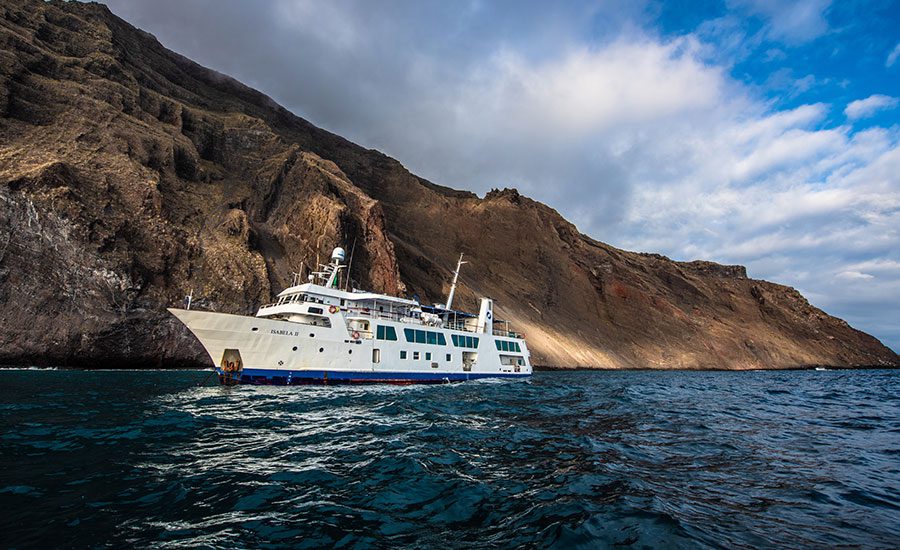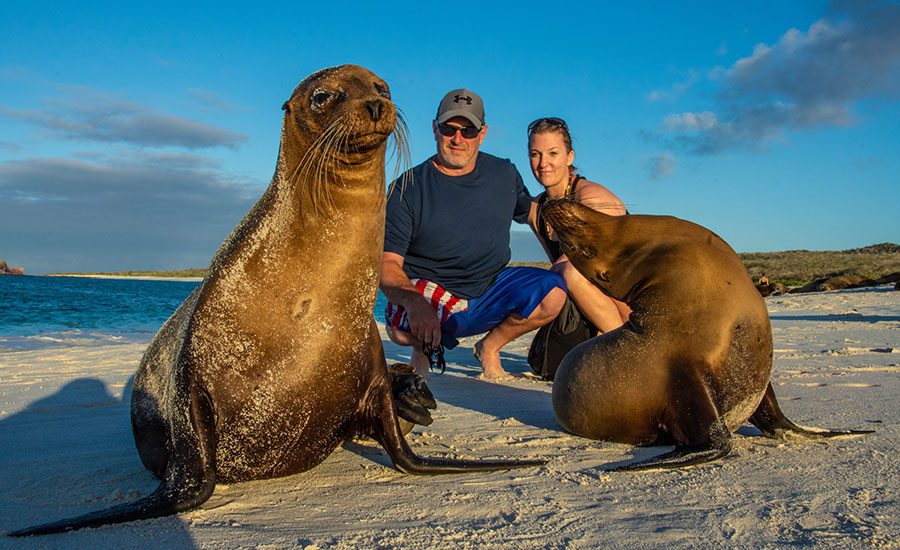Indeed, some individuals may experience seasickness while sailing in the Galapagos Islands. However, we have significantly improved our ships and itineraries to minimize this discomfort, ensuring you enjoy the best of the islands. Seasickness can be a deterrent for many travelers. For some, merely contemplating the swaying motion of a boat can induce slight dizziness. But cast those worries aside! The Galapagos Islands possess unique attributes that differentiate them from other world-renowned destinations like the Caribbean or the Mediterranean. Please continue reading to discover what makes this archipelago different for ocean travel and the specific features of our expedition vessels that further reduce the likelihood of seasickness!
TALK TO A DESTINATION EXPERT

Diego Zapata

Rosa Mena

Sandy Lara

Diego Zapata

Rosa Mena

Sandy Lara
HOW STRONG ARE THE WAVES IN THE GALAPAGOS?
The archipelago’s considerable distance from the mainland ensures that the harsh waves typically found near the continent are absent. It’s widely understood that mega-ships experience less sea movement, promising a steadier voyage. If you’re exploring travel opportunities in the Galapagos, consider inquiring about the ship’s size for a more stable experience. The Expedition Cruise, the largest vessel in our fleet with a capacity for 90 guests, is among the most steady ships navigating the islands. Despite being medium-sized, our beloved Expedition Yachts, La Pinta and Isabela II (with capacities of 48 and 40 guests, respectively), also employ state-of-the-art stabilizing technology. This not only aids in fuel efficiency but also steadies the ship when anchored near the shore.

When ocean currents pass through shallow areas, they become agitated due to friction, resulting in wavier seas. This implies that when ships are near shore or anchored, the motion of the ocean is more noticeable. However, we’ve crafted our itineraries with two strategies in mind:
- The ships are anchored while travelers disembark at visitor sites. This means you’ll be on land during activities, reducing the potential for seasickness.
- We schedule travel during the night to ensure the steady forward motion of the ship counteracts any side movements, providing a good night’s sleep!
Travelers may occasionally experience some motion, but it is generally mild and short-lived. However, some people, including the author of this post, are tending to seasickness. It’s always a good idea to consult your doctor before sea travel.
All our vessels have an onboard medical officer experienced in handling medical situations at sea for added peace of mind.
IS SEASICKNESS IN THE GALAPAGOS POSSIBLE?
As previously mentioned, the Galapagos Islands are influenced by open sea currents and winds. This means that the periphery of the archipelago is most exposed to stronger currents. However, the outer edges of the archipelago serve as a natural barrier, diminishing the intensity of both wind and sea currents experienced in the central regions of the archipelago.
EMPLOY ANOTHER INTELLIGENT STRATEGY TO PREVENT SEASICKNESS: CHOOSE A WELL-DESIGNED ITINERARY
Our itineraries are meticulously planned, considering both the wave movements to which the boat is exposed and the duration of this exposure. This is done without compromising wildlife sightings or the overall visitor experience! We design our itineraries to align stopovers with land-based activities and schedule travel during the night to ensure a restful sleep for our guests.

What islands and animals can I see on your itineraries?
Our itineraries benefit from decades of experience in planning Galapagos travel. Our itineraries are designed to maximize island access and guarantee a comfortable rest. Our itineraries will surpass your wildest expectations regarding wildlife sightings, so take your Galapagos Big15 list out and get ready to start checking off its most iconic species!
Immerse yourself in a fantastic, complete, transformative Galapagos experience!

Javier Garcia

Eduardo Silva

Carolina Escobar
START PLANNING YOUR TRIP

Javier Garcia

Eduardo Silva

Carolina Escobar
Get in touch for more
CONTACT US


